NASA’s Perseverance rover has confirmed the presence of an ancient lake on Mars that could hold the key to ancient life. Evidence of ancient lacustrine sediments at the base of Jezero Crater on Mars offers new hope for detecting traces of life in samples collected by NASA’s Perseverance rover.
Perseverance landed on February 18, 2021 inside the Red Planet’s 28-mile (45-kilometer) wide Jezero Crater, which is believed to once have housed a large lake and river delta. The rover is combing the crater for signs of past life, and collecting and storing dozens of samples along the way for a possible return to Earth in the future. Using the Radar Imager for Mars’ Subsurface Experiment (RIMFAX) instrument on the rover, researchers from the University of California, Los Angeles (UCLA) and the University of Oslo have discovered new clues about how layers of sediment formed over time on the crater floor.
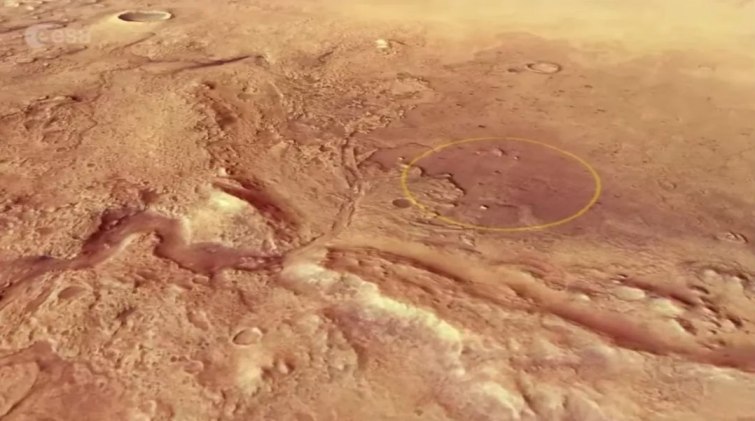
A set of geological features suggested that more than 3.5 billion years ago there was a lake here, into which a fairly large river flowed. In space photographs taken by the European Space Agency (ESA) Mars Express automatic interplanetary station, a cone of sedimentary deposits of the ancient river delta is clearly visible opposite its mouth at the bottom of the crater.
“From orbit we can see many different deposits, but we cannot say with certainty whether what we see is their original state or whether we are seeing the end of a long geological history,” said David Page, the study’s first author and deputy principal investigator. RIMFAX researcher and professor at UCLA. “To say how these things formed, we need to look deeper.”
As Perseverance travels across the surface of Mars, the RIMFAX instrument sends radar waves down at 4-inch (10-centimeter) intervals and measures the pulses reflected from about 65.6 feet (20 meters) below the surface to create a subsurface profile of a crater on Mars. RIMFAX data showed sediment from water that once filled the crater. It is possible that microbial life could have existed in the crater at this time, and if such life existed on Mars, sediment samples from this area would contain traces of their remains.
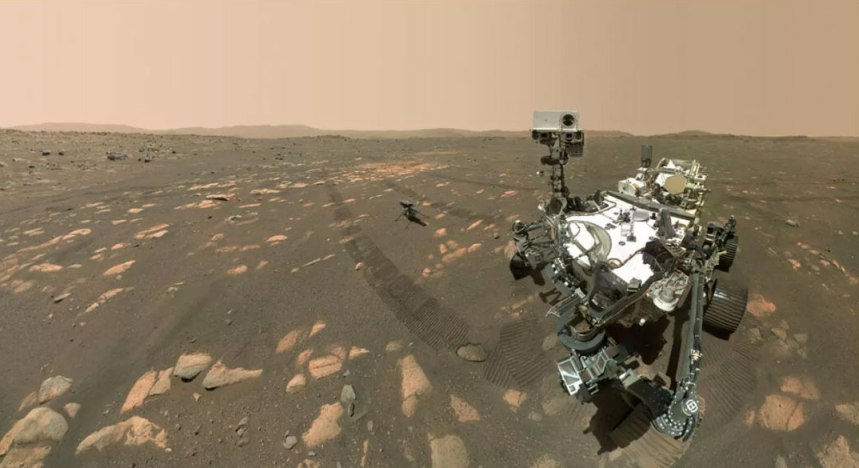
Two distinct periods of deposition occurred, resulting in layers of sediment on the crater floor that appear regular and horizontal, much like the layers seen on Earth. Fluctuating water levels in the lake caused some sediment deposits to form a huge delta, which Perseverance crossed between May and December 2022, according to the statement.
Radar measurements also show an uneven crater floor beneath the delta, likely due to erosion before sediments were deposited. As the lake dried out over time, the layers of sediment in the crater eroded, forming the geological features visible on the surface of Mars today. “The changes we see in the rocks are caused by large-scale changes in the Martian environment,” Page said in a statement. “It’s exciting that we can see so much evidence of change in such a small geographic area, allowing us to extend our findings to the scale of the entire crater.”
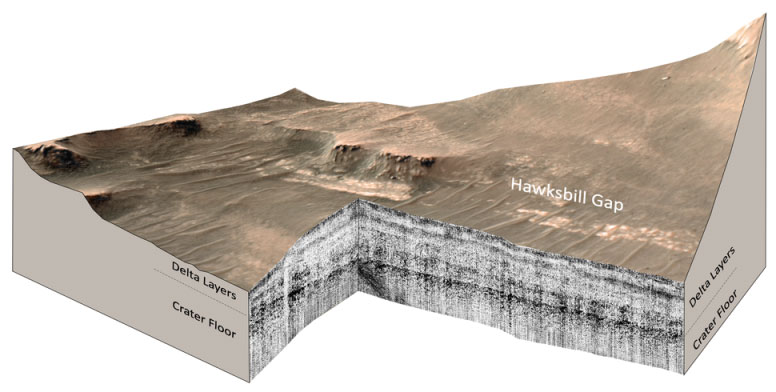
Spectrometric imaging from the Mars Reconnaissance Orbiter, launched in 2005, showed that they contain carbonates and clay minerals, the formation of which requires liquid water. According to scientists, if life existed on Mars in early eras, then its traces should be preserved in the sedimentary rocks of the delta or the lake itself. That’s why they decided to send the rover here.
Carbonates are of particular interest from the point of view of searching for traces of ancient life. On Earth, they make up the shells of marine invertebrates, the skeletons of corals, as well as stromatolites – the fossil remains of ancient cyanobacterial mats. Carbonate fossils are perfectly preserved in sedimentary rocks for billions of years. The oldest stromatolites found in earth rocks also arose 3.5-3.7 billion years ago.
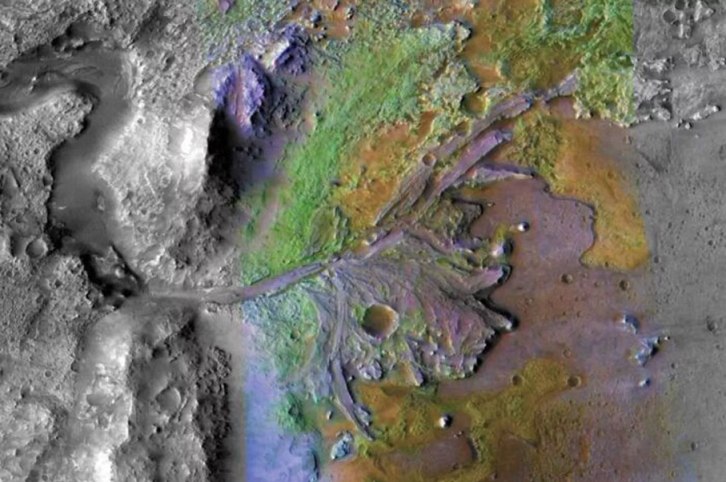
The Perseverance rover is equipped with instruments for analyzing the chemical and mineralogical composition of rocks and detecting organic compounds, as well as the RIMFAX (Radar Imager for Mars’ Subsurface Experiment) ground penetrating radar, which probes the Martian interior to a depth of 20 meters. It is able to distinguish between rocks of different densities and structures, and find underground water ice and brine lenses. In addition, the rover has a robotic arm with a drill, with which the device takes rock samples weighing about 20 grams each and seals them in metal cylinders.
Perseverance’s key mission, as defined by project leaders, is to search for biosignatures that can confirm the existence of microbial life on Mars in the past. Therefore, the mission was initially aimed at collecting and analyzing samples of sedimentary rocks from the lake bottom and the delta of the ancient river. The difficulty was that the paleodelta has an inverted topography. Because sedimentary deposits are more resistant to weathering than the surrounding pyroclastic rocks, the former river channels now form ridges that rise above the surrounding area. Therefore, they decided to land the rover not in the delta zone, but on the flat bottom of the crater opposite it.
The operating principle of the device is as follows: every ten centimeters of the path it emits electromagnetic radar waves that penetrate up to 20 meters deep into Mars. By determining the impulse of reflected waves returning from depth, the georadar builds an image of the subsoil profile, which shows rocks with different physical properties and the interfaces between them with an accuracy of one centimeter.
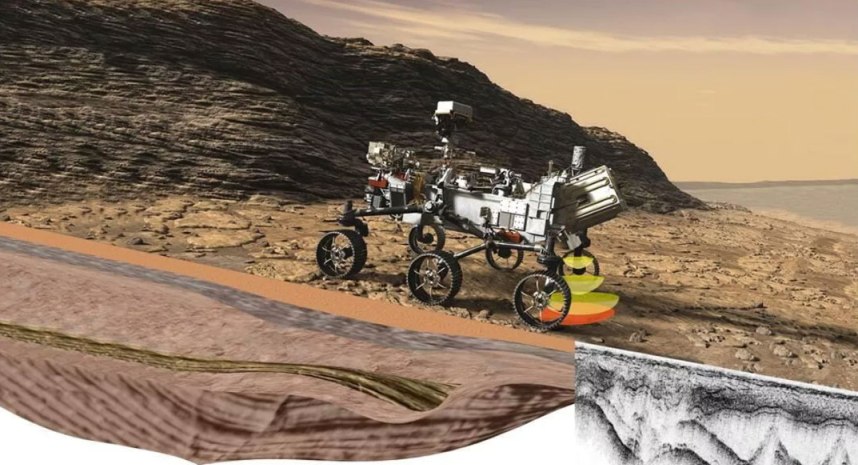
Previously, based on geological data, it was known that the crater was formed approximately 3.9 billion years ago, in the middle of the Noachian period. Its bottom is composed mainly of volcanic rocks aged from 3.9 to 3.8 billion years. And the sedimentary deposits of the delta were formed 3.75-3.5 billion years ago, in the Late Noachian-Early Hesperian time.
Then a lake formed, and sediments began to be deposited at its bottom. In the basal (lowest) part of lake sediments, the layers are strictly horizontal. This suggests that sedimentation at the initial stage took place in the environment of a vast, calm body of water. Gradually the lake level rose. Along with it, the height of the river sediment cone—deltaic sediments in its western part, at the confluence of the river—grew.
Then came the dry period. The water in the lake became less and less, and the calm flow of the river gave way to occasional stormy streams. This is indicated by the presence of many boulders in the undifferentiated sediments of the upper deltaic deposits. Then the lake dried up and the second stage of erosion began. At this time, rocky outcrops such as Cape Nukshak and deep gullies such as Hawksbill Gorge were formed.





